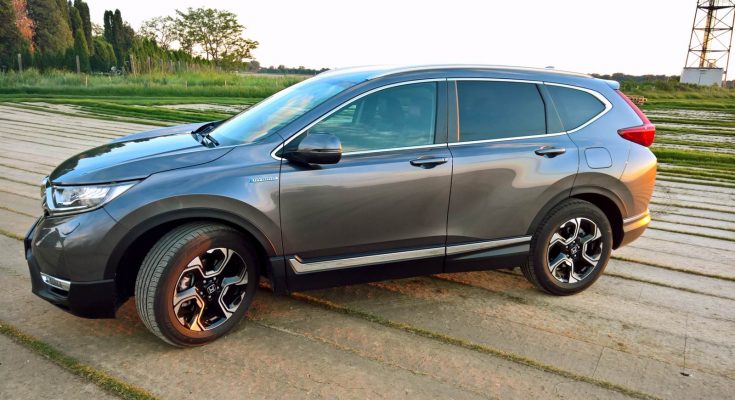Honda was the first manufacturer to introduce a hybrid vehicle in Europe in 1999. It was at the very beginning of the hybrid revolution with millions of units sold worldwide. With the new CR-V, it introduces their latest i-MMD hybrid technology. Its commitment is "blue skies for our children" or "blue sky for our children" and it wants to gradually introduce emission-free and low-emission vehicles to the market so that by 2025 they make up two thirds of European sales.
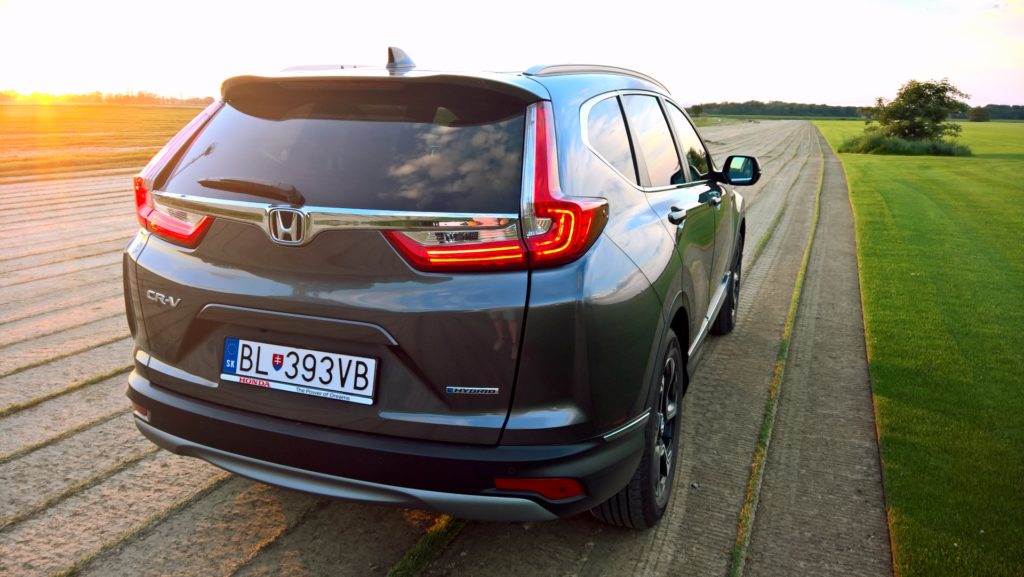
Since we already tested the current CR-Včko in similar equipment at the beginning of the year with a gasoline engine, I will try to focus more on the hybrid system and its functioning in real traffic. In appearance, it is still the same SUV, which does not offend and requires a certain amount of admiration for Japanese design in order to be satisfied. You can read the entire test here: LINK
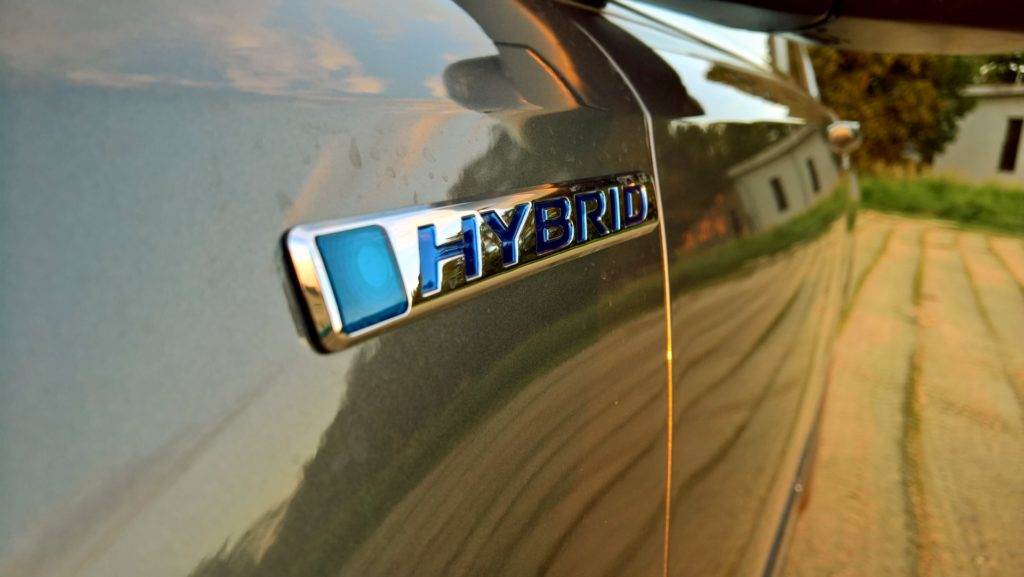
At first glance, it's a regular CR-V , except for the plaques with the inscription hybrid, there are no design changes, only behind the steering wheel you will notice different graphics and the on-board computer menu and the absence of a gear lever. A car with one gear does not need a gear lever, it is enough with the buttons for differentiating driving forward, backward, parking and neutral. The center console is therefore emptier. Some may not like it, but it is practical and very intuitive.
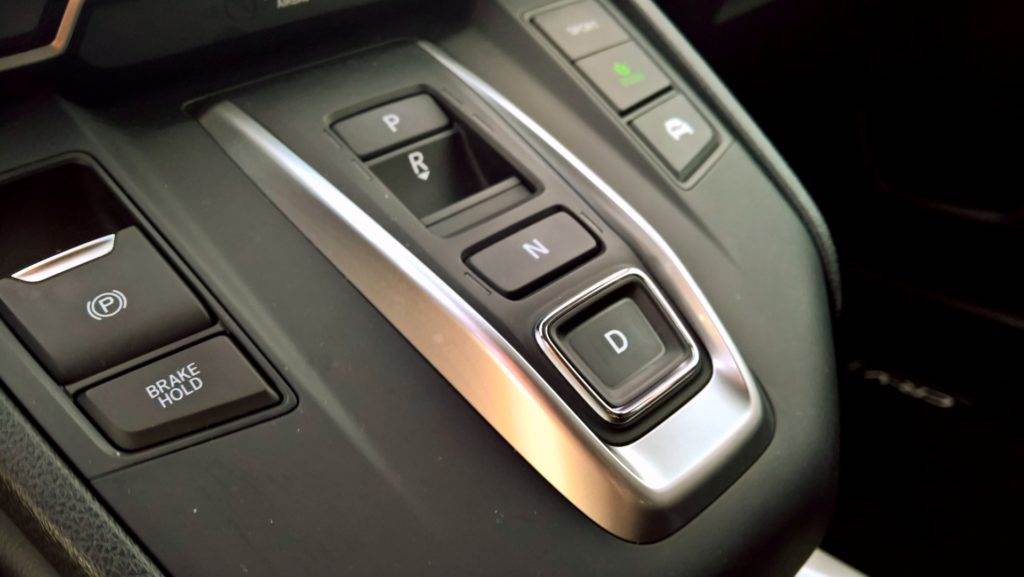
After getting into the car for the first time and pressing the start button, you will be literally "deafened" by the silence.
Nothing. Simply, just like in a fully electric vehicle, only peace in a well-insulated cabin.
After all those diesel test cars, you feel like you're in another world.
And the best is yet to come. After engaging a single gear with the button on the center console, the car starts moving and reaches a speed of approx. 45km/h hear nothing… absolutely NOTHING. Is this the future of motoring?! So let's look at it from a practical and ecological point of view.

Classic hybrid vehicles usually have a dual drive (hence they are referred to as a hybrid) and most of the time they operate in a gasoline or diesel engine drive mode assisted by an electric motor to achieve lower consumption.
However, Honda's hybrid drive works a little differently. The vehicle is constantly powered by electricity and a gasoline atmospheric aggregate with a bore and stroke of 81.0 x 96.7mm and a volume of 2-liters and a power of 107kW (145k), which works in the Atkinson cycle, serves as an energy generator for the electric motor, which in this case only drives the front axle . In the version with all-wheel drive, the rear axle is driven by a classic cardan. Another electric motor takes care of redistributing the power, which regulates the power of the gasoline engine and the drive electric motor so that ideal power and thrust are always available. And the move here is correct…

The electric motor itself has a power of 135 kW (184 hp) and 315 Nm of torque is available from zero rpm. The Hybrid CR-Včko accelerates from zero to 100 km/h in a beautiful 8.8 seconds. Since the vehicle does not have a classic gearbox, there is only one permanent gear and therefore the pull is linear right from the start. Although the battery has a capacity of only 1 kWh, it can supply energy for approx. 2-3 km of driving and (depending on many factors) the vehicle can run entirely and exclusively on electric energy. When the power requirement is higher after more pedaling, the gasoline generator is connected to the system and immediately starts producing electricity for the drive while recharging the battery. To make matters worse, a gasoline engine can be used from approx. 70 km/h to connect via direct transmission (as if the highest speed were engaged) to the system and thus help the electric motor in smooth driving.
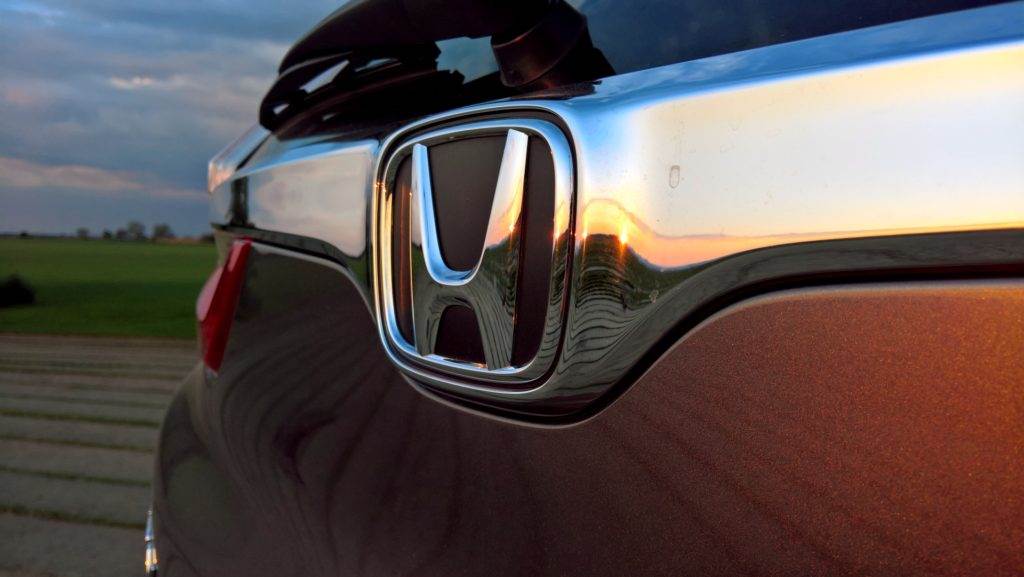
All these transitions, connections and disconnections are automatic, and if you didn't have the option of displaying the current drive and energy flow, in most cases you wouldn't even recognize how the current vehicle is working. Of course, when you step on the gas sharply or when you need to overtake, the classic V-Tec makes itself known with a vacuum cleaner sound at the highest revs, but 95% of the time it works at the ideal, almost inaudible revs.
To all this, we must add the recovery of electrical energy. This is taken care of by the regenerative braking system, which converts energy from braking into electrical energy, which is not lost but is stored in the battery. Here, the electric motor works in reverse – instead of using energy to turn the wheels, the turning wheels turn the motor, which produces electricity. We can still manually adjust the power of recuperation with the paddles under the steering wheel, but the difference between "min" and "max" is not so significant and you cannot stop the vehicle completely with this. However, it is useful when braking at intersections and roundabouts.
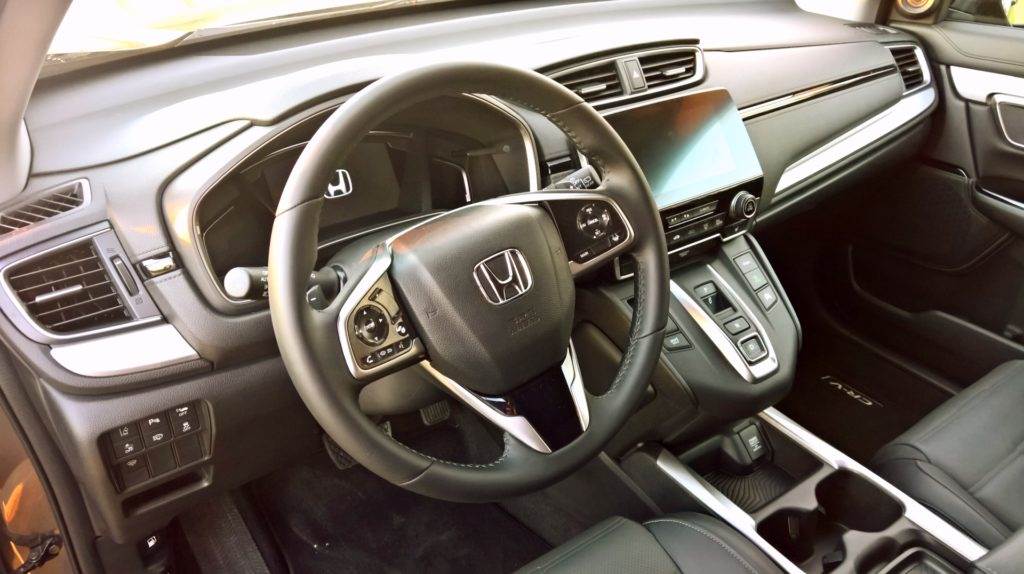
The battery is charged by daily driving and the energy flow is regulated completely automatically. No sockets, no searching for charging points – it's the epitome of simplicity. The gasoline engine generates energy to charge the battery, and its charge level is constantly monitored. The indicator on the dashboard also shows the battery status on the 7″ LCD monitor of the information interface and also on the left side of the dashboard.
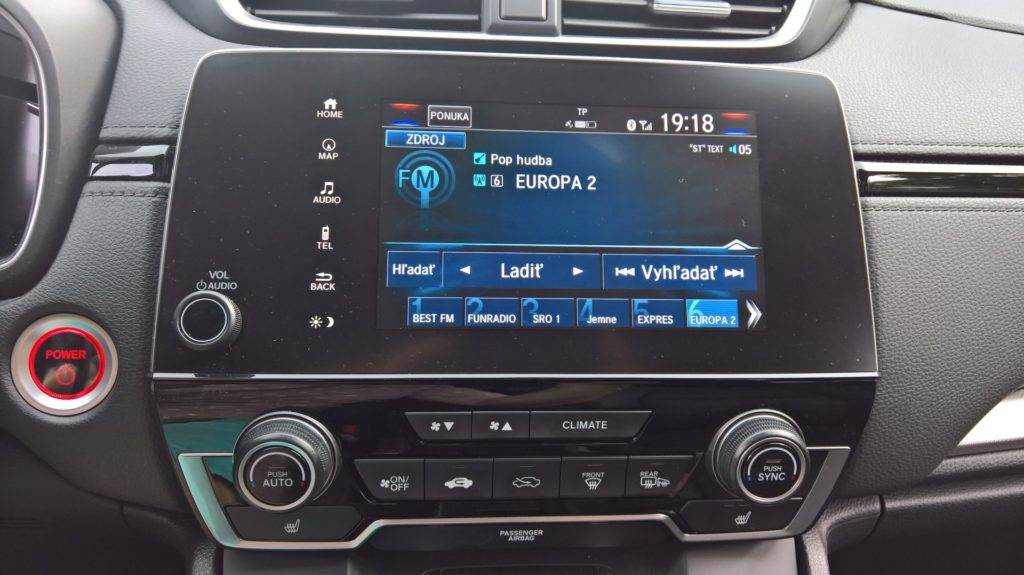
In urban and suburban mode, the hybrid is at home and can afford to turn off the engine more often, frequent braking recharges the battery and consumption drops to around 5 liters. The strength of this system is precisely that the longer you stand in traffic jams, the lower your consumption. In contrast to combustion engines, the engine does not work when it is stopped, and when moving gently, it emits only a fraction of the energy needed to move the mass of iron. When braking, it always recharges a little. This, in conjunction with the excellent adaptive cruise control, which also has the function of driving in a convoy (auto stop + auto start), makes the CR-V Hybrid an ideal vehicle for a crowded city. At the peak, you will drive with minimal consumption, quietly, without emissions and without stress…

However, on a trip to the highway, you will find that the hybrid cannot replace diesel or better gasoline. On long highway routes, the consumption of an extracted two-liter will rise to 7 to 8 liters at the maximum permitted speed. If you want to go faster, you will pay extra for fuel. There is still work to be done here.
The combustion engine, electric motor, generator and their control units are in the engine compartment under the front hood, the lithium-ion battery is located under the luggage compartment, so it lost the usable part under the folding bottom and also the option of a 7-seat version. The volume of the luggage compartment has decreased from 561 to 497 liters. However, it is still a very usable space.
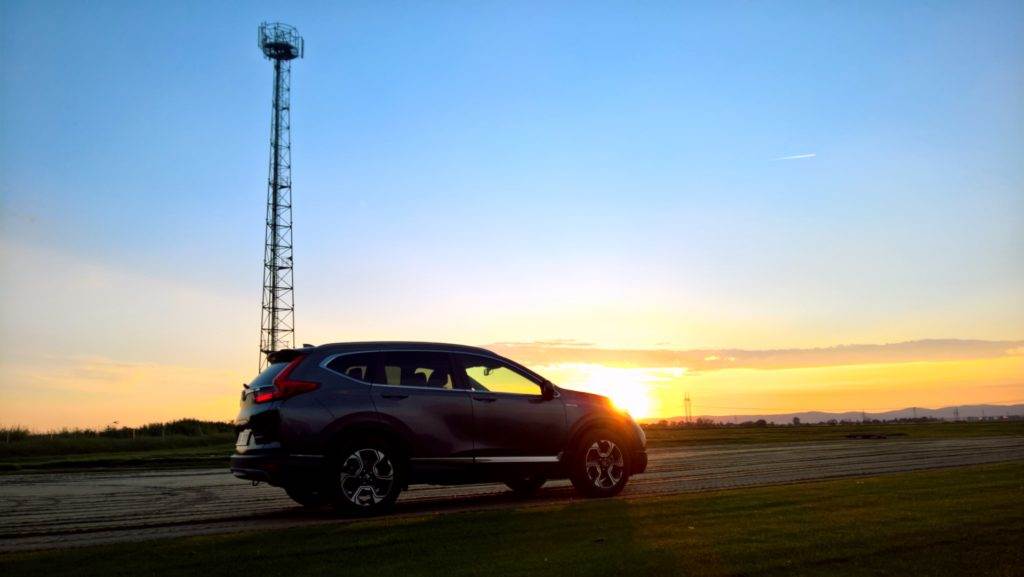
Honda has more than twenty years of experience with hybrid systems and offers a 5-year or 100,000 km warranty on the components of the i-MMD system. The price of the CR-V Hybrid model starts from: €29,990, and the currently tested model with front-wheel drive only and in the Lifestyle equipment and with an extra charge for metallics is priced at €36,890. For this money you get a great SUV with minimal consumption in the city and on short routes. If you are looking for a car for the highway or long distances – the Hybrid still has no upper hand here.
| Technical specifications | Honda CR-V 2.0 i-MMD – Hybrid, 2WD |
| Engine type: | Spark plug |
| Cylinders / valves: | 4 / 16 |
| Displacement (ccm): | 1993 |
| Highest power (kW(k) / rpm) | 107 (143) / 6200 |
| The highest twist. torque (Nm / rpm): | 175 / 4000 |
| The highest power of the electric motor (kW(k) / rev/min) | 135 (184) / 0+ |
| The highest twist. electro moment. (Nm / rpm): | 315 / 0+ |
| Gearbox: | Without gearbox / direct transmission |
| Acceleration 0 – 100 km/h (s): | 8.8 |
| Combined consumption – WLTP (l/100 km): | 5.0-5.4 |
[rl_gallery id=”5505″]

